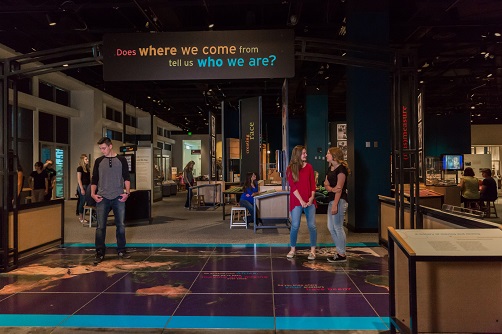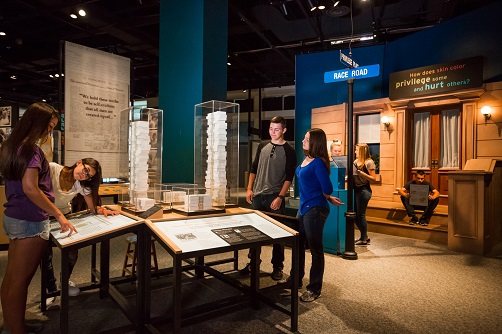Exploring the Reality of Race
The Science Museum of Minnesota Asks If We Are Really So Different
While race is certainly a hot-button topic, that doesn’t mean it can’t be engaging, accessible, and fun to learn about. That’s why the American Anthropological Association, in collaboration with the Science Museum of Minnesota, has brought Race: Are We So Different? back to the museum indefinitely.
 “The exhibit is organized around three seams; biology, history, and contemporary lived experience,” says Joanne Jones-Rizzi, Director of Community and Engagement. It does this by combining artifacts, historic and contemporary photography, multimedia components, and as many interactive activities as possible. “There’s no sequence; no beginning, middle, and end," she explains. "I tell people to go to what interests them.”
“The exhibit is organized around three seams; biology, history, and contemporary lived experience,” says Joanne Jones-Rizzi, Director of Community and Engagement. It does this by combining artifacts, historic and contemporary photography, multimedia components, and as many interactive activities as possible. “There’s no sequence; no beginning, middle, and end," she explains. "I tell people to go to what interests them.”
Despite having been a traveling exhibit--which has visited over fifty cities since 2007--the exhibit is huge, encompassing over 5000-square feet. As Jones-Rizzi explains, “If you watched every video, read every label, and did every interaction, you’d be there for four hours.”
When you first walk in, you’ll see the enormous map on the floor depicting how the human race has migrated all over the planet, mixing and mingling throughout history. “We want people to understand we all share a common ancestor, and that we are 99% more alike than we are different,” she says.
There is also The Colors We Are activity, where you can scan your skin and watch it form a piece of a computer screen mosaic next to dozens of other visitors’ scans. Or you can go over to the pharmacy set and get your blood pressure taken while learning about how, even in the 21st century, race effects how people are medically treated.
 There are also plenty of multimedia components, such as photographer Wing Young Huie’s photographs of the lives of diverse, working-class individuals and communities in Minnesota and across the country. There are live performances and videos, each with individual sets designed to help the immersion, such as a stoop in front of an apartment building. “People can sit on that stoop and watch videos about how housing laws have benefited some people and not others,” says Jones-Rizzi. “We try to give these concrete examples of how these laws affected individuals.”
There are also plenty of multimedia components, such as photographer Wing Young Huie’s photographs of the lives of diverse, working-class individuals and communities in Minnesota and across the country. There are live performances and videos, each with individual sets designed to help the immersion, such as a stoop in front of an apartment building. “People can sit on that stoop and watch videos about how housing laws have benefited some people and not others,” says Jones-Rizzi. “We try to give these concrete examples of how these laws affected individuals.”
Despite the touchy subject, the exhibit is not designed to make people upset. “When we created these programs, we didn’t do it to make anyone feel badly.” But it is designed to make you think and reconsider how society treats race, which is the biggest lesson the exhibit tries to teach. “We’re saying that race is an idea; race is made up," Jones-Rizzi says. “It’s a hard concept for a lot of people to wrap their brains around because it’s such an ingrained idea.”
However, she says that race isn’t completely imaginary--it’s real because we make it real. “Even though it doesn’t exist in a biological way, it exists in a social way.” That’s why so many of the activities and multimedia displays have a social component. “It’s a construct that has very real consequences and impacts people in a very profound way.”
Race: Are We So Different? is a great way to learn about our society through some truly unique and interactive exhibits. You’re much more likely to take away a lesson if you had fun while learning it, so the exhibit tries to be just as enjoyable as it is educational. Jones-Rizzi says, “We want people to go away with enough engagement and interest so they’ll want to keep talking about it.”
-By Ettractions Digital Content Editor, ALLISON BENNETT

You are not logged in. To login or create an account please click here